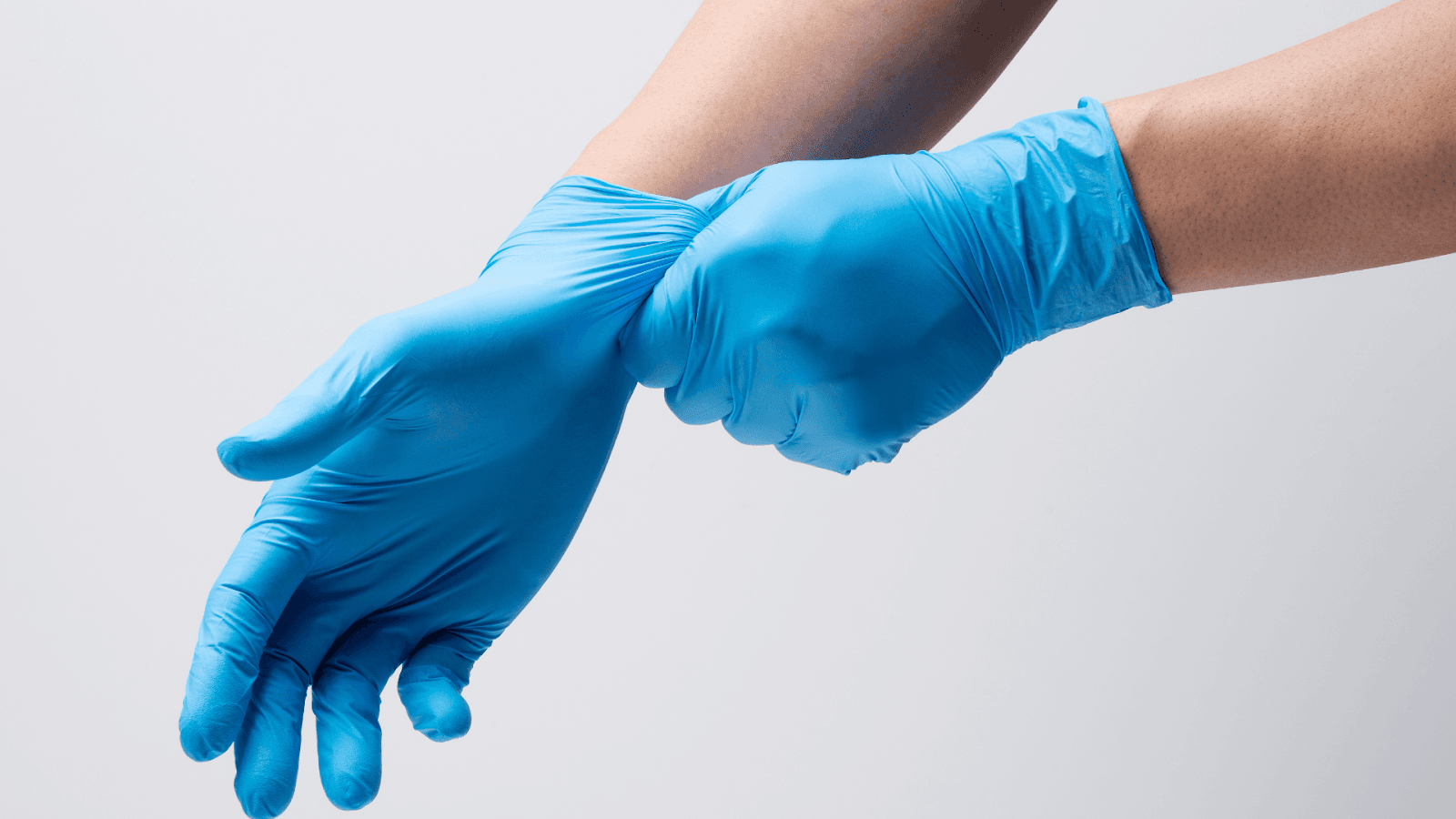Medical Nitrile, Latex & Vinyl Gloves: A Comprehensive Guide
Medical Nitrile, Latex & Vinyl Gloves: A Comprehensive Guide
Introduction to Medical Gloves:
In the healthcare settings, prioritizing the safety and well-being of healthcare professionals and patients is crucial, particularly in the context of medical procedures and examinations. An integral element of effective infection control is the utilization of medical gloves. Medical Gloves like Nitrile, Vinyl & Latex gloves, which are disposable in nature, act as a protective barrier, preventing the transmission of microorganisms that have the potential to cause infections or illnesses.
Medical gloves encompass a range of types as Class I reserved medical devices regulated by the U.S. Food and Drug Administration (FDA). These gloves undergo meticulous evaluation to ensure compliance with stringent performance criteria, encompassing attributes such as leak resistance, physical properties, and bio-compatibility.
Within the scope of this comprehensive guide, we will explore the multifaceted world of medical gloves, encompassing vital aspects such as their various types, applicable standards and regulations, usage and COVID-19 guidelines, constituent materials, and significant research findings. By the conclusion of this informative journey, you will possess the knowledge required to make well-informed decisions pertaining to the implementation of medical gloves within your healthcare practice.
Types of Medical Gloves:
According to the FDA, there are three main types of medical gloves, each designed for specific applications:
- Examination Gloves: These gloves are typically made from latex, vinyl, or nitrile and are used for general examinations and other non-surgical procedures. They are designed to prevent cross-contamination between healthcare workers and patients.
- Surgical Gloves: These gloves are sterile and are used during surgical procedures. They are made to a higher standard than examination gloves and are often made from latex or nitrile to offer better precision and sensitivity. They come in precise sizes for a better fit.
- Chemotherapy Gloves: These gloves are specifically designed for handling chemotherapy agents. They are tested to ensure that they are resistant to permeation by chemotherapy drugs. These gloves are usually made from nitrile, as it offers superior chemical resistance compared to other materials.
Medical Gloves Material:
Medical gowns are made of various different materials, in this section we will explore the three main type of materials used.
Nitrile Gloves for Higher Durability, Better FIt & Latex Allergy Alternative
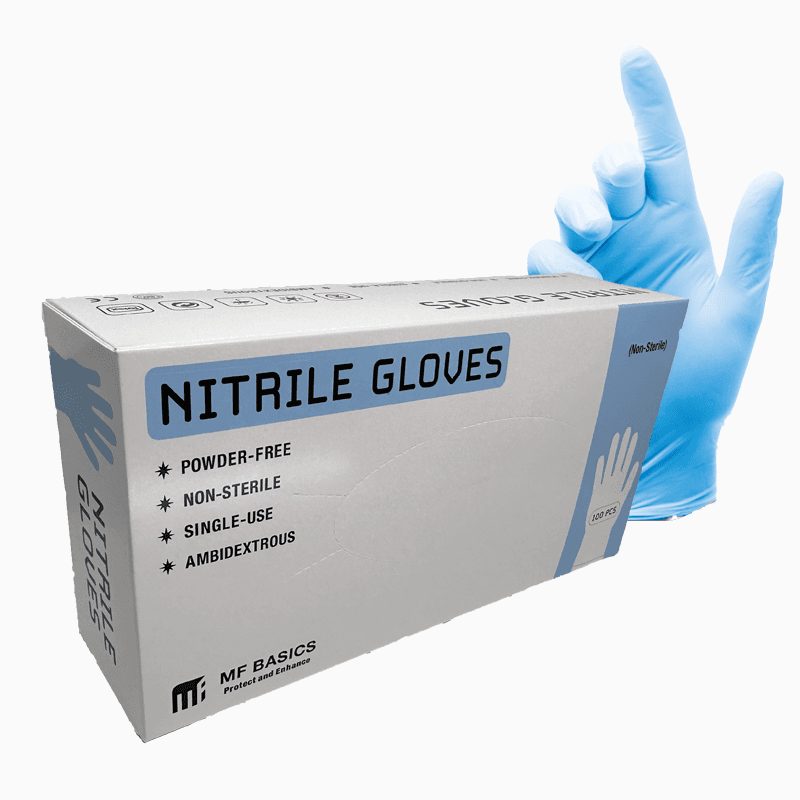
Nitrile gloves are made from synthetic rubber and are a great alternative for those with latex allergies. They offer excellent puncture resistance and are highly durable, making them suitable for tasks that require durability and protection.
Nitrile gloves also have a high level of sensitivity and conform to the hand for a better fit. They are resistant to many oils and aqueous chemicals, making them a popular choice for handling hazardous substances, including certain chemotherapy drugs.
To make a purchase, you might want to explore the following direct links:
- MF Powder-Free 5g Nitrile Gloves (Box)
- ASSURE Soft Nitrile Gloves Powder-Free
- ASSURE Soft Nitrile Gloves Lite Powder-Free
- Sri Trang Nitrile Gloves Powder Free 3g Carton
Want to know more about nitrile gloves? Have a quick read on MF.Asia Beginner’s Guide to Nitrile Gloves.
To learn more about their differences, consider the complete guide of disposable nitrile gloves vs latex vs vinyl.
Latex Gloves for Precision and Sensitivity
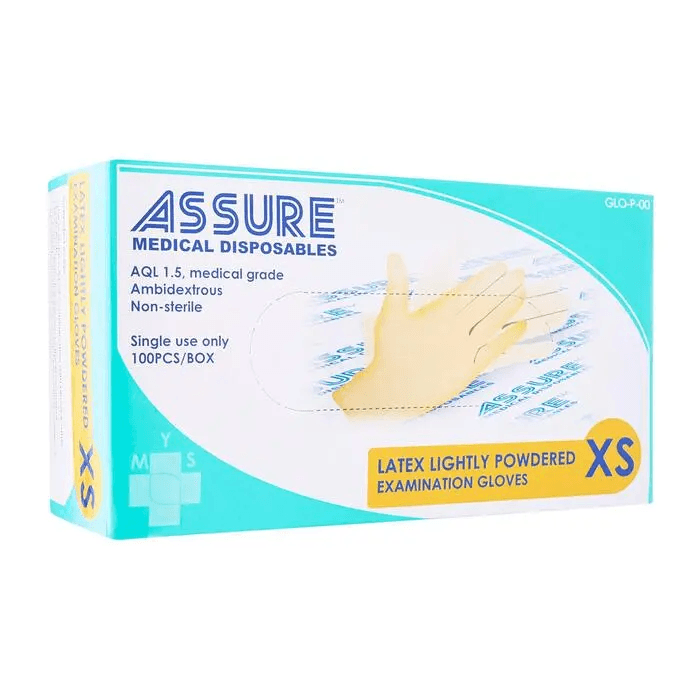
Latex gloves are made from natural rubber latex, a renewable resource. They offer excellent flexibility, elasticity, and a snug fit that mimics the hand's natural contour. This makes them a popular choice for procedures requiring precision and sensitivity.
However, repeated exposure to latex can lead to allergic reactions in some individuals, ranging from skin irritation to more severe symptoms like difficulty breathing. This has led to a decrease in their use in healthcare settings, especially in developed countries.
For more information on latex gloves manufactured in Singapore, please visit the links below:
Vinyl Gloves for Low-risk and Short-term Tasks
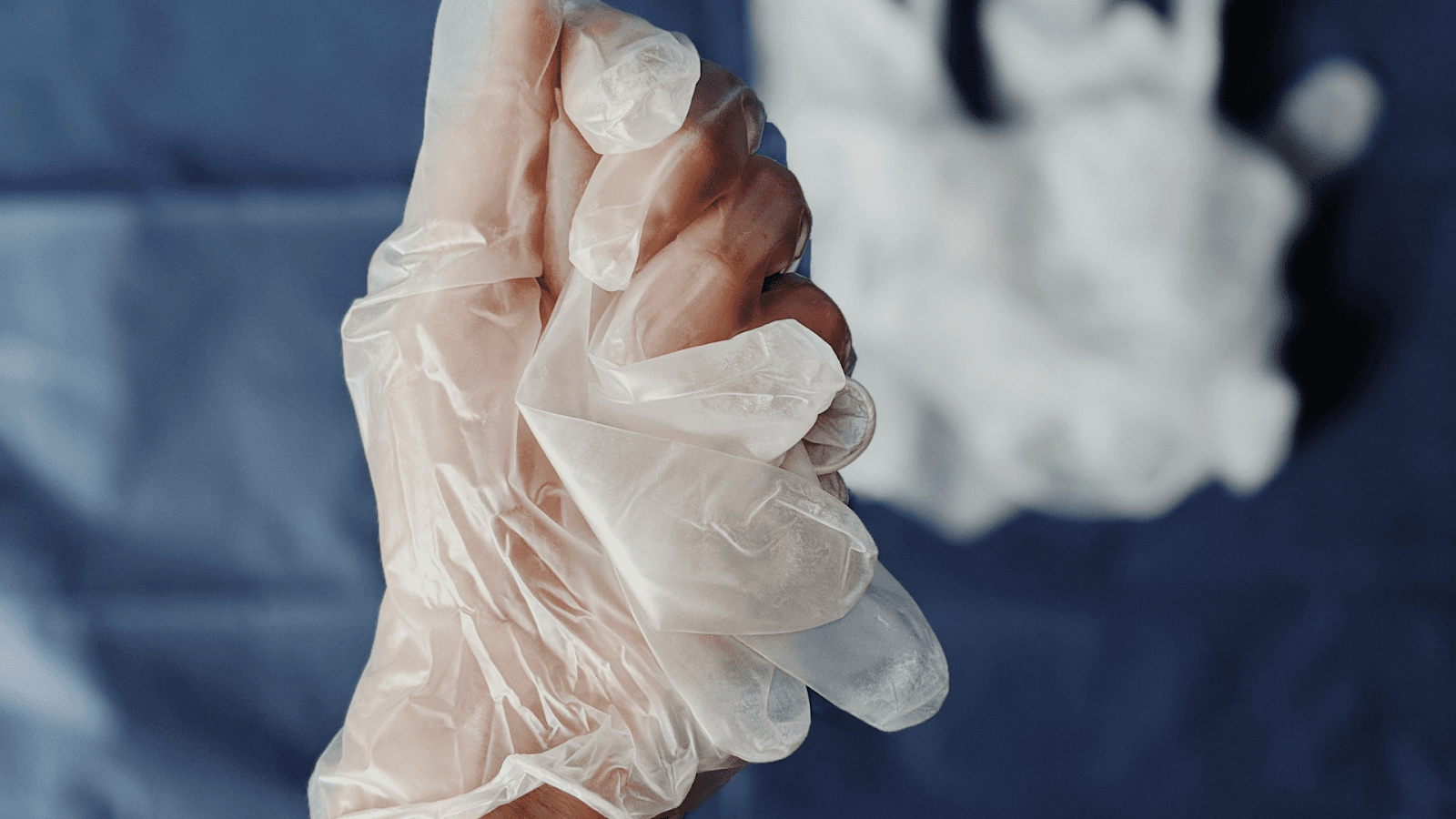
Vinyl gloves are made from polyvinyl chloride (PVC) and plasticizers that soften the material. They are a cost-effective option and are best suited for low-risk, short-term tasks where durability and high-level protection are less of a concern.
While they are latex-free and thus suitable for individuals with latex allergies, they offer less elasticity and fit compared to latex and nitrile gloves. They are also less resistant to punctures and may not provide adequate protection when handling certain chemicals or infectious materials.
If you are looking for vinyl gloves, visit here for more information about vinyl powder free disposable glove.
Usage Guidelines
According to the FDA, medical gloves should be used when your hands may come into contact with body fluids (such as blood, respiratory secretions, vomit, urine, or feces), certain hazardous drugs, or potentially contaminated items. Here are some practical tips for using medical gloves:
- Wash Your Hands (Before): Firstly, it is crucial to wash your hands thoroughly before putting on sterile medical gloves. This step helps maintain a clean and hygienic environment.
- Proper Fit: Ensure that the gloves fit properly for comfortable wear during all patient care activities. Gloves that are too tight can cause hand fatigue and compromise dexterity, while gloves that are too loose may not provide adequate protection.
- Allergy Awareness: Be aware of potential allergies. Some people are allergic to the natural rubber latex used in some medical gloves. If you or your patient is allergic to natural rubber latex, choose gloves made from other synthetic materials (such as polyvinyl chloride (PVC), nitrile, or polyurethane).
- Sharp Objects: Be aware that sharp objects can puncture medical gloves. Always use caution when handling sharp instruments.
- Glove Integrity: Always change your gloves if they rip or tear. Never attempt to repair torn gloves.
- Wash Your Hands (After): After removing medical gloves, wash your hands thoroughly with soap and water or an alcohol-based hand rub.
- Single Use Only: Never reuse, wash, disinfect, or share medical gloves. They are designed for single use only.
- No Sharing: Medical gloves should never be shared with other users. Each individual should have their own pair of gloves to minimize the risk of cross-contamination and maintain infection control practices.
Ban on Powdered Medical Gloves
On December 19, 2016, a significant regulatory action was taken by the FDA to address the risks associated with powdered gloves. The FDA published a final rule that banned the use of powdered gloves in medical settings. This decisive measure was implemented due to the unreasonable and substantial risk of illness or injury posed to individuals exposed to powdered gloves.
Powdered gloves, commonly used in medical procedures, were found to present serious health hazards. These risks include the potential for severe airway inflammation, hypersensitivity reactions, and complications during surgical interventions. Recognizing the need to prioritize the safety and well-being of both healthcare professionals and patients, the FDA concluded that the risks associated with powdered gloves outweighed any potential benefits they might offer.
By imposing this ban, the FDA aimed to eliminate the use of powdered gloves across medical facilities, reducing the incidence of adverse health effects and improving overall patient care. This regulatory action underscores the FDA's commitment to ensuring the highest standards of safety and protection in healthcare settings.
Healthcare providers and professionals are strongly encouraged to adhere to this ban and transition to alternative glove options that do not involve the use of powder. By doing so, they contribute to creating a safer environment for everyone involved in medical procedures and examinations.
Standards and Regulations: Medical Gloves

Medical gloves, including examination and surgical gloves, are regulated by various international standards. These standards ensure that the gloves meet certain performance criteria to provide effective protection. Here are some of the key standards:
American Society for Testing and Materials (ASTM) Standards
The ASTM has several standards related to medical gloves, which cover a range of factors such as barrier protection against biological and chemical hazards, puncture resistance, tensile strength, and dimensional requirements:
- ASTM D3578 for rubber examination gloves
- ASTM D5250 for vinyl examination gloves
- ASTM D6319 for nitrile examination gloves
- ASTM D3577 for rubber surgical gloves
By adhering to ASTM standards, manufacturers can ensure that their medical gloves provide the necessary protection and functionality needed to safeguard healthcare workers and patients during medical procedures and examinations. It also contributes to maintaining consistency and quality across the industry, ultimately enhancing patient safety and infection control measures.
The European Norms (EN) 455 Standards
EN 455 is the series of standards for medical gloves for single use. It includes:
- EN 455-1 for freedom from holes
- EN 455-2 for physical properties
- EN 455-3 for biological evaluation
- EN 455-4 for shelf life determination
European Norms (EN) standards also play a significant role in setting standards for medical gloves within the European Union (EU). These standards are developed by the European Committee for Standardization (CEN) and provide guidelines and requirements for the manufacturing, testing, and performance of medical gloves. Complying with EN standards is essential for manufacturers who intend to sell medical gloves within the EU market. These standards ensure that the gloves meet the necessary quality, safety, and performance requirements, providing assurance to healthcare professionals and patients.
International Organization for Standardization (ISO) 11193 Standards
ISO 11193 is the series of standards for single-use medical examination gloves. It includes:
- ISO 11193-1 for specification for latex examination gloves
- ISO 11193-2 for specification for vinyl examination gloves
Complying with ISO standards ensures that medical glove manufacturers meet internationally recognized benchmarks for quality, safety, and performance. It enables consistency in the manufacturing processes, product quality, and regulatory compliance across different regions and countries.
FDA Regulations
In the United States, the FDA regulates medical gloves. They require a 510(k) premarket notification to demonstrate that the glove to be marketed is safe and effective.
Accepted Quality Level (AQL)
AQL is a standard used to ensure that the quality of the gloves is consistent and that the gloves are reliable for their intended use. It is a statistical measurement of the maximum number of defective gloves that could be considered acceptable during the random sampling of a batch of gloves.The established criterion used to assess product quality, as defined in ISO 2859-1 represents the highest level of quality that is deemed tolerable. When conducting random sampling quality inspections, the AQL provides guidance on the permissible number of defective components typically expressed as a percentage or ratio:
- AQL for Medical-Grade Gloves: Typically set at 1.5 or lower. This means that in a batch of 100 gloves, no more than 1.5% of the batch can fail the test (i.e., have holes or tears).
- AQL for Surgical Gloves: Even stricter, with an AQL of 1.0 or lower.
These tests provide valuable insights into a glove's ability to withstand various hazards and offer the necessary protection. The resistance to puncture, tear, abrasion, cut, and chemical are the essential indicators to consider before making an informed decision when selecting gloves that provide the necessary strength and protection for specific tasks and environments.
If you are considering venturing into the manufacturing of medical gloves, it is crucial to familiarize yourself with the requirements for qualifying under the quality system regulation. You can obtain valuable insights by accessing the "Medical Glove Guidance Manual" provided by the FDA. This manual offers comprehensive recommendations specifically tailored for medical glove manufacturers who are preparing to submit Premarket Notifications (510(k)).

For more information on the national standards and guidelines provided by the Ministry of Health, Singapore, in different care settings, please visit the “National Infection and Prevention Control Guidelines and Standards” page and download the relevant guidelines.
Medical Gloves and COVID-19

In the face of the COVID-19 pandemic, PPE has become paramount in ensuring the safety of healthcare professionals on the front lines. Among the crucial elements of PPE are medical gloves, which serve as a vital barrier against the transmission of the virus.
The FDA recognizes the significance of medical gloves in mitigating the risk of infection and has provided guidance to help healthcare providers and manufacturers navigate these challenging times:
- Proper Use When Donning and Doffing: Use medical gloves correctly and adhere to established protocols such as the CDC PPE sequence guide.
- Material Selection: Guidance on selecting the appropriate type of medical gloves, including considerations for latex allergies and the availability of alternative materials such as polyvinyl chloride (PVC), nitrile, or polyurethane.
- Regulatory Compliance: Information on FDA regulations and standards for medical gloves, emphasizing the need for manufacturers to meet performance criteria to ensure their effectiveness and safety.
- Supply Chain Considerations: Insights into the ongoing efforts to address the global demand for medical gloves and maintain a stable supply chain.
- Patient Safety: Recommendations for healthcare providers to educate patients on the appropriate use and disposal of medical gloves to minimize cross-contamination and promote overall safety.
As of March 2023, the FDA has finalized two guidelines. In order to enhance the accessibility of medical gloves during the public health emergency caused by COVID-19, efforts have been made to increase their availability.
Stakeholders are encouraged by the FDA to carefully review the two recently released final guidances, specifically manufacturers intending to pursue marketing authorization for their devices. They are advised to initiate the development of a comprehensive marketing submission, incorporating a transition implementation plan as outlined in the provided guidances. Taking these steps will ensure alignment with the FDA's recommendations and facilitate a smoother process for obtaining authorization.
Clinical Research Findings: is Double-gloving Better?
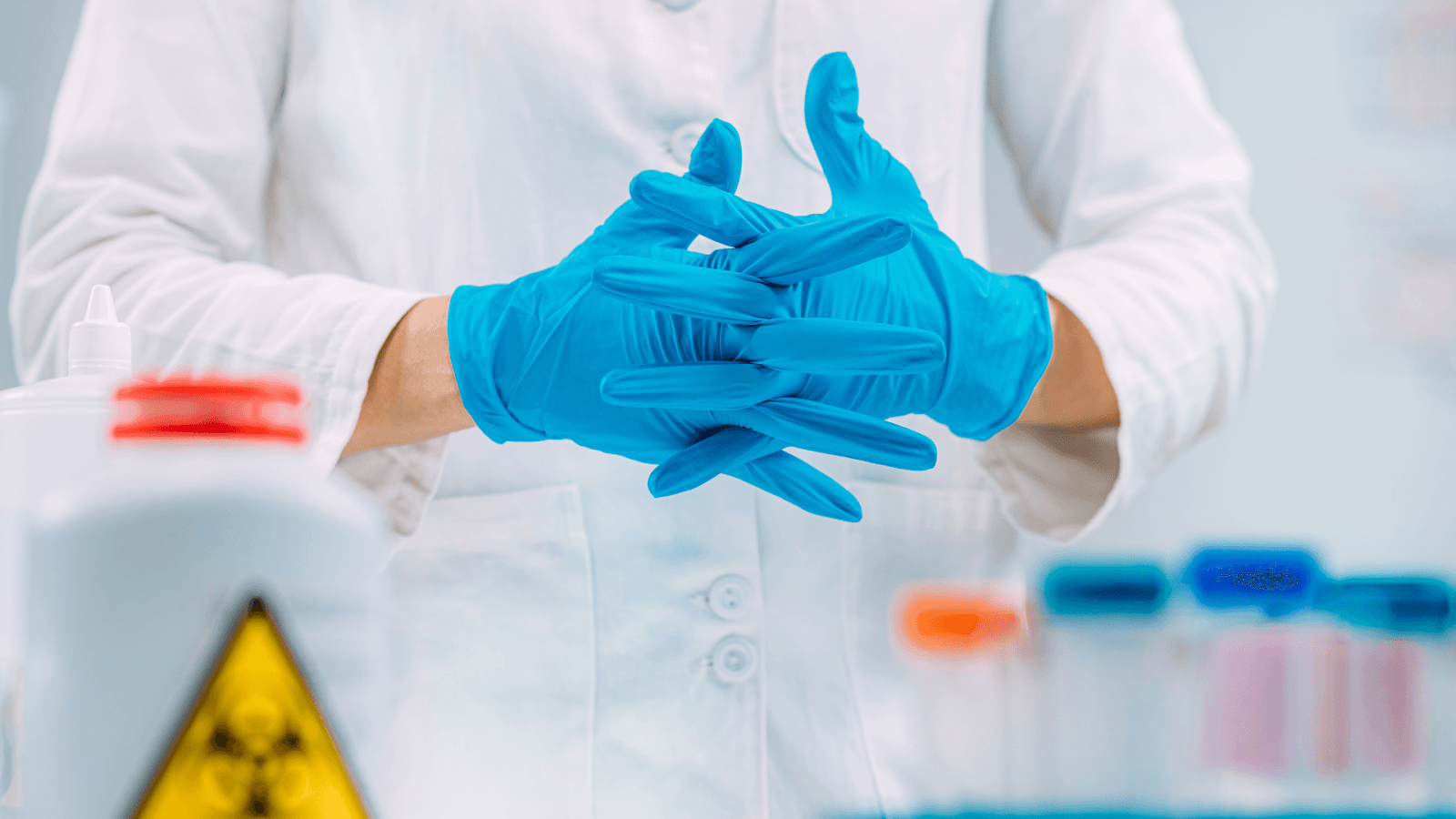
Research papers have also contributed to our understanding of medical glove usage. For instance, one study evaluated which type of PPE equipment and which method of donning or doffing PPE have the least risk of contamination or infection for healthcare workers.According to the authors, it is recommended to adhere to the CDC's guidelines on donning and doffing procedures. These include implementing a one-step glove and gown removal process, considering double-gloving for added protection, providing clear verbal instructions during doffing, and considering the use of glove disinfection methods. By following these practices, the risk of contamination can be minimized, and healthcare workers can effectively comply with the recommended protocols for infection prevention.
In another study, double-gloving confirms the effectiveness in preventing blood contamination. There is a statistically significant difference in the rate of surgical glove perforation between the double-gloving group and the single-gloving group. By implementing double gloving, the risk of healthcare workers being contaminated with blood-borne pathogens during surgical procedures can be reduced. This evidence provides valuable information to the surgical team and decision-makers, highlighting the importance of considering double gloving as a strategy to minimize occupational exposure and enhance safety in the operating room.
Conclusion on Medical Gloves
Medical gloves are a vital component of infection control strategies in healthcare settings. Understanding the different types of gloves, their appropriate usage, and the standards they must meet is crucial for healthcare workers. Proper usage of medical gloves can significantly reduce the risk of infection transmission, ensuring the safety of both healthcare workers and patients. As medical practices and standards continue to evolve, so too will the guidelines and research surrounding medical glove usage.
By following the FDA and CDC's recommendations and adhering to international standards such as ASTM, EN, and ISO, healthcare professionals can continue to provide care with confidence while keeping themselves and their patients safe in these challenging times.
For comprehensive and reliable medical gloves, MF.Asia is a trusted provider that meets international standards and regulations, designed to provide effective protection. To learn more about our high-quality medical gloves and how we can meet your specific needs, please visit our website or contact our team here. We are dedicated to supporting your healthcare facility with the best glove solutions and maintaining a safe environment for all.
